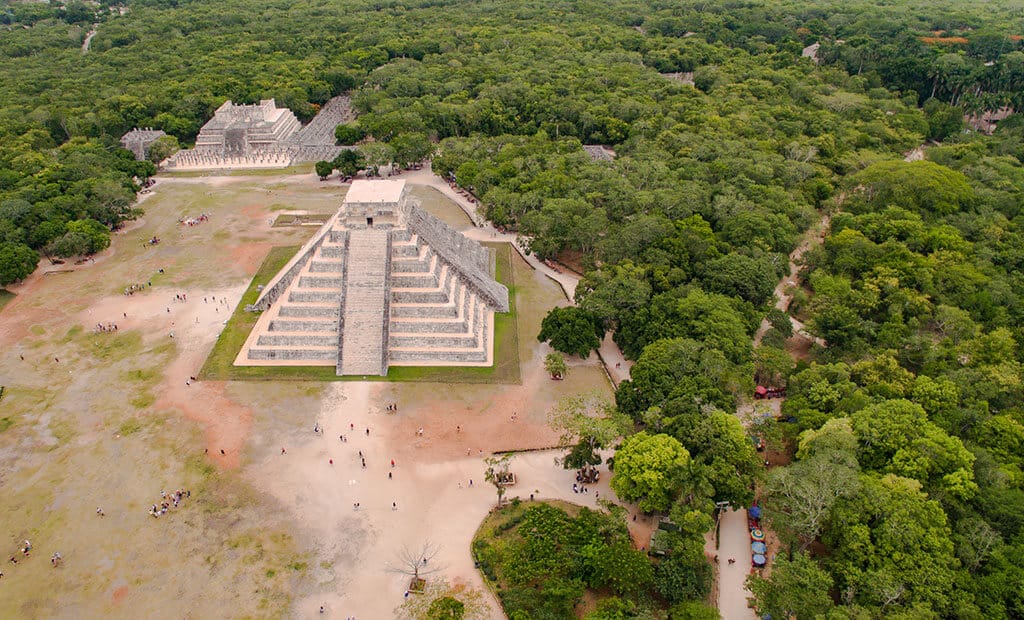What Does Chichén Itzá Mean?

Chichén Itzá is a name that sparks several images. Especially of ancient pyramids, intricate carvings, and the enigmatic culture of the Maya. But have you ever wondered what the name “Chichén Itzá” actually means? It comes from the Mayan words “chi” (mouth), “chen” (well), and “Itzá” (referring to the Itzá people). Chichén Itzá means “the mouth of the well of the Itzá.” Here are some words on the question: What does Chichén Itzá Mean?
Chichén Itzá: Mouth of the Well of the Itzá
The name Chichén Itzá references the sacred cenotes, or natural wells. They played a critical role in Mayan spirituality, agriculture, and daily life. The “mouth of the well” suggests that these cenotes were gateways to both life-sustaining water and spiritual realms. The Itzá, once was a powerful and influential Mayan group. It established Chichén Itzá as an important ceremonial and trade center. Visiting Chichén Itzá offers travelers a glimpse into the deep significance of these wells and the culture that thrived around them.
What does Chichén Itzá Mean? Kukulkan
At the heart of Chichén Itzá lies El Castillo, also known as the Pyramid of Kukulkan. This 30-meter tall pyramid is a marvel of Mayan engineering and astronomy. It’s aligned with the sun’s position during the equinoxes, creating the famous “serpent” shadow that appears to slither down the pyramid’s steps. This phenomenon is a tribute to Kukulkan, the feathered serpent god, and showcases the Mayans’ advanced understanding of astronomy. Watching this incredible event, especially during the spring or autumn equinox, is an experience not to be missed!
Discover the Sacred Cenote
Just a short walk from the main pyramid is the Sacred Cenote, a large natural sinkhole with crystal-clear waters. This cenote held great religious importance for the Maya, who used it to make offerings to their gods, including gold, jade, and even human sacrifices. Today, the Sacred Cenote is one of the most visited spots within Chichén Itzá, inviting visitors to reflect on the spiritual beliefs that defined Mayan life.
What does Chichén Itzá Mean. The Temple of the Warriors
This impressive temple features rows of carved columns that depict warriors and various gods, showcasing the military power and religious devotion of the Maya. Known for its intricately carved stone figures, the Temple of the Warriors offers insight into the rituals and strength of the Itzá people. Exploring this temple gives a sense of the ceremonies that might have taken place here centuries ago.
The Great Ball Court: A Center for Ritual and Sport
The Great Ball Court is the largest and best-preserved ball court in Mesoamerica. Here, the Maya played a sacred ball game known as pok-ta-pok, which held significant religious meaning. The game, played with a heavy rubber ball, was a symbolic struggle between good and evil, life and death. Standing in this court, you can feel the history and mystique that once filled the air, as Mayan teams played for the favor of their gods.
A Must-Visit on the Yucatán Peninsula
From the sacred cenotes to the grandiose pyramid of Kukulkan, each corner of this site tells a story of this civilization’s ingenuity, spirituality, and complexity. As a UNESCO World Heritage Site and one of the New Seven Wonders of the World, this is an unmissable destination for travelers seeking to connect with the mysteries and majesty of the Mayan world.
